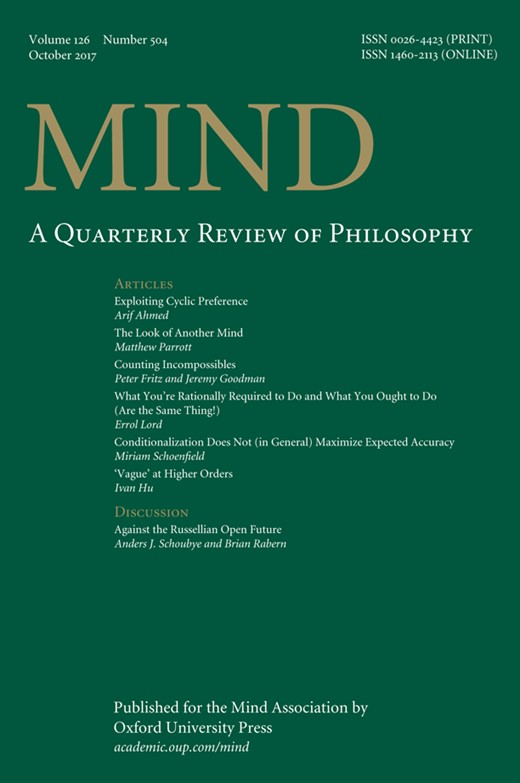-
Views
-
Cite
Cite
Ivan Hu, ‘Vague’ at Higher Orders, Mind, Volume 126, Issue 504, October 2017, Pages 1189–1216, https://doi.org/10.1093/mind/fzw046
Close - Share Icon Share
Abstract
Sorensen (1985) has argued that one can exploit the vagueness of an ordinary predicate like ‘small’ to induce a sort of vagueness in ‘vague’, by constructing a series of predicates of the form ‘n-small’, where x is n-small if and only if x is small or x < n. The resulting ‘Sorensen’ed’ predicates present a Sorites case for ‘vague’ (‘1-small’ is vague; if ‘n-small’ is vague, so is ‘n+1-small’; therefore, ‘106-small’ is vague); hence the vagueness of ‘vague’. Hyde (1994) argues that this demonstrates that all vague predicates are higher-order vague. Others doubt whether Sorensen’s series really delivers such a result, claiming Hyde’s argument to be either: unsound, because it misidentifies the true source of vagueness in Sorensen’s Sorites (Deas 1989, Hull 2005); invalid, because it fails to generalize to all vague predicates (Tye 1994); or circular, because it presupposes the very thing it tries to prove, namely, higher-order vagueness (Varzi 2003, 2005). This paper contributes to the Sorensen-Hyde vs. Tye-Deas-Hull-Varzi debate by clarifying the relations between vague vagueness and higher-order vagueness. I show how claims of higher-order vagueness are derivable from claims of vague vagueness (but not vice versa). This is the missing piece needed to complete Hyde’s argument and overcome the objections presented by Deas, Hull, Tye, and Varzi. I then show how Sorensen’s considerations, once properly generalized, pose more far-reaching consequences about the vagueness of ‘vague’ than either defenders or critics of Hyde’s argument have appreciated.



